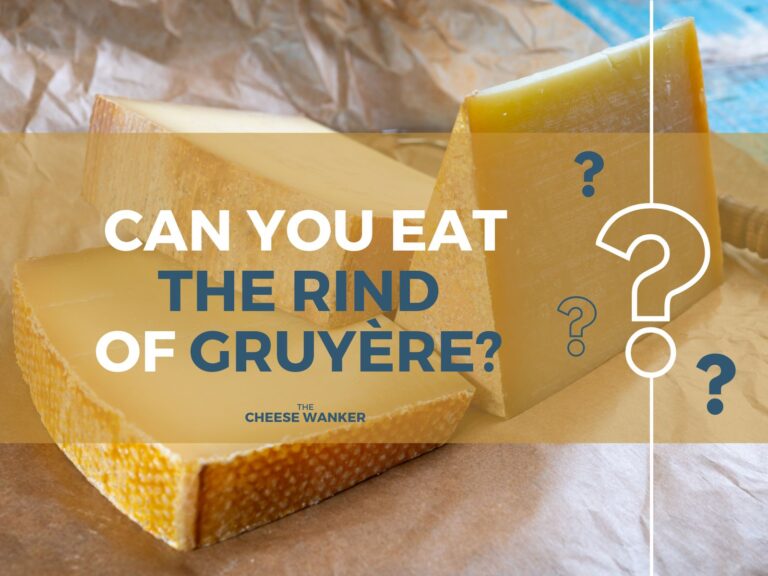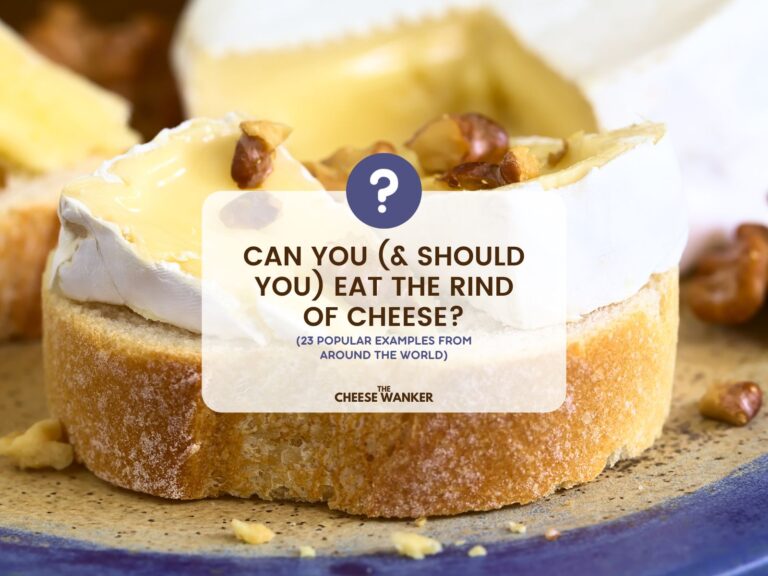In our blog post, we delve into the world of cheese, exploring its rich history and incredible diversity. From soft Brie to firm Cheddar, these gastronomic masterpieces definitely have a story to tell. Get ready to discover the magic within the different parts of cheese!
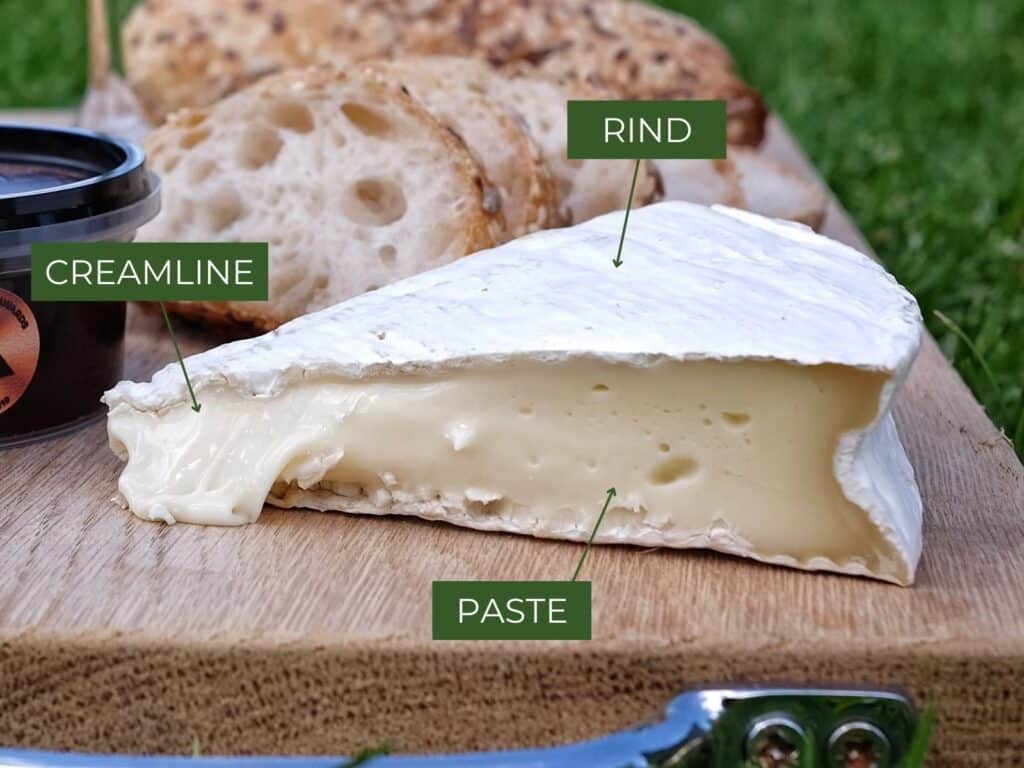
SEE ALSO: 100+ cheese terms that all cheese lovers should know →
Cheese Rind
Let’s start our exploration with the part of the cheese we all see first, the rind. In simple terms, the rind is the outside of the cheese. But there are many different types of rinds.
Overall, the rind plays an important role in both protecting the inside of the cheese and also texture and flavour development as it matures. We’ll get back to that a bit later.
BUY NOW: Don’t Leave The Rind Behind Grocery Bag →
Natural Rind
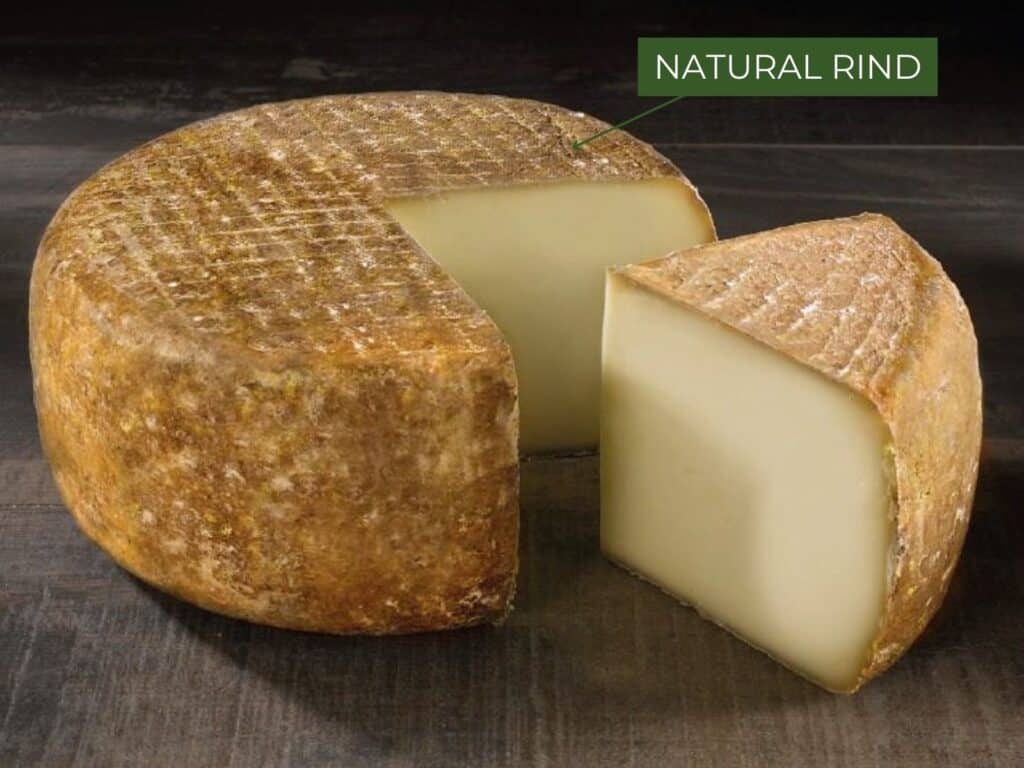
Unsurprisingly, a natural rind is one that forms naturally around the cheese as it ages. As a matter of fact, you can find natural rinds on a number of different types of cheeses. Some popular examples are soft white mould cheeses like Brie and Camembert. And soft washed rind cheeses like Epoisses, Langres and Taleggio.
In all of those examples, the rind assists in proteolysis (the breakdown of milk proteins) to create the texture of the cheese. Because of this, we refer to such cheeses as surface-ripened cheeses.
Having said this, soft cheeses aren’t the only type that can form a natural rind. Pressed cheeses such as Cheddar and Parmigiano Reggiano develop a natural rind as they mature.
Moreover, washed rind pressed cheeses like Gruyère, Comté and Raclette develop a natural rind that is influenced by the brine (salt water) solution that cheesemakers wash them in. The brining favours the growth of specific bacteria on the surface of the cheese which produce a sticky brown/orange rind.
Clothbound Rind
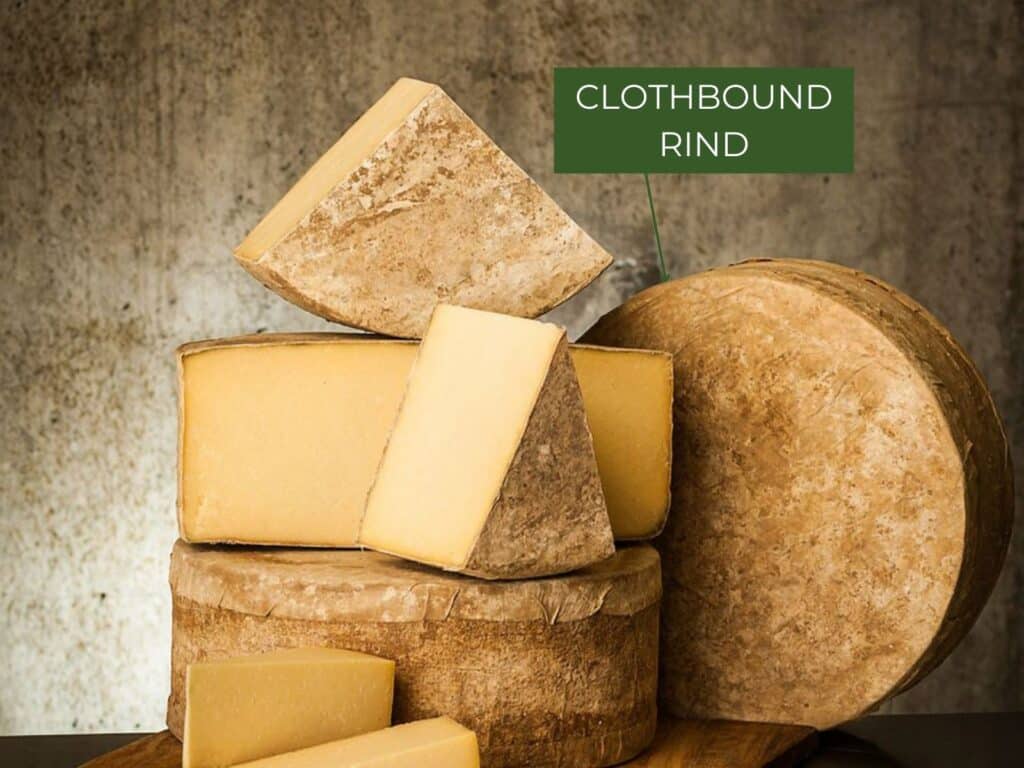
The remaining types of rind we’ll be looking at are created by human intervention. The first one is the traditional practice of wrapping Cheddars in cloth. Actually, this practice originates either in England or the USA (depending on who you ask) and forms a breathable barrier around the cheese.
As the Cheddar matures, it develops unique aromas and flavours that can be credited to the lard they’re coated in and the cloth that they’re wrapped in. Of course, this type of rind is not edible and you should remove it before you eat the cheese.
Wax Rind
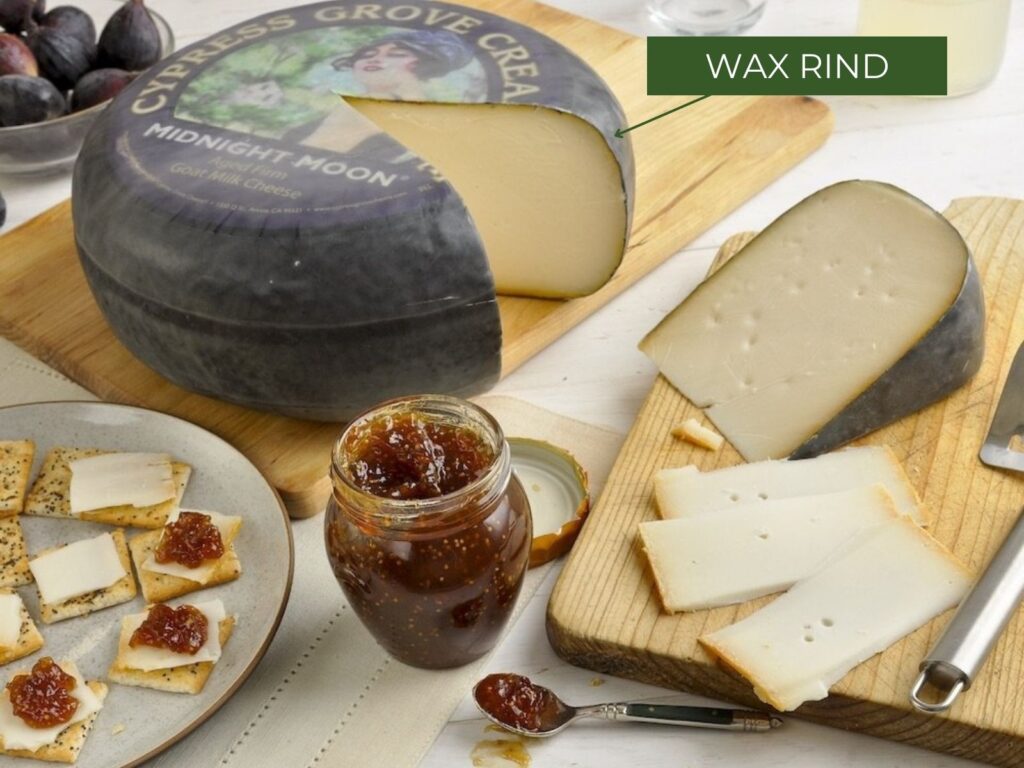
Finally, we have wax rinds. This particular type of rind is formed by applying a melted wax mixture to the outside of the cheese as soon as it is made. As the wax cools down, it forms a protective layer around the cheese.
This practice is very common with Dutch cheeses like Gouda and Edam. But you can also find wax rinds on certain Cheddars and blue cheeses.
The main benefits of coating a cheese in wax is to protect it from external elements and trap more moisture inside. Hence, you will often find that a waxed Cheddar will be softer and less crumbly than a clothbound one.
Cheese Skin
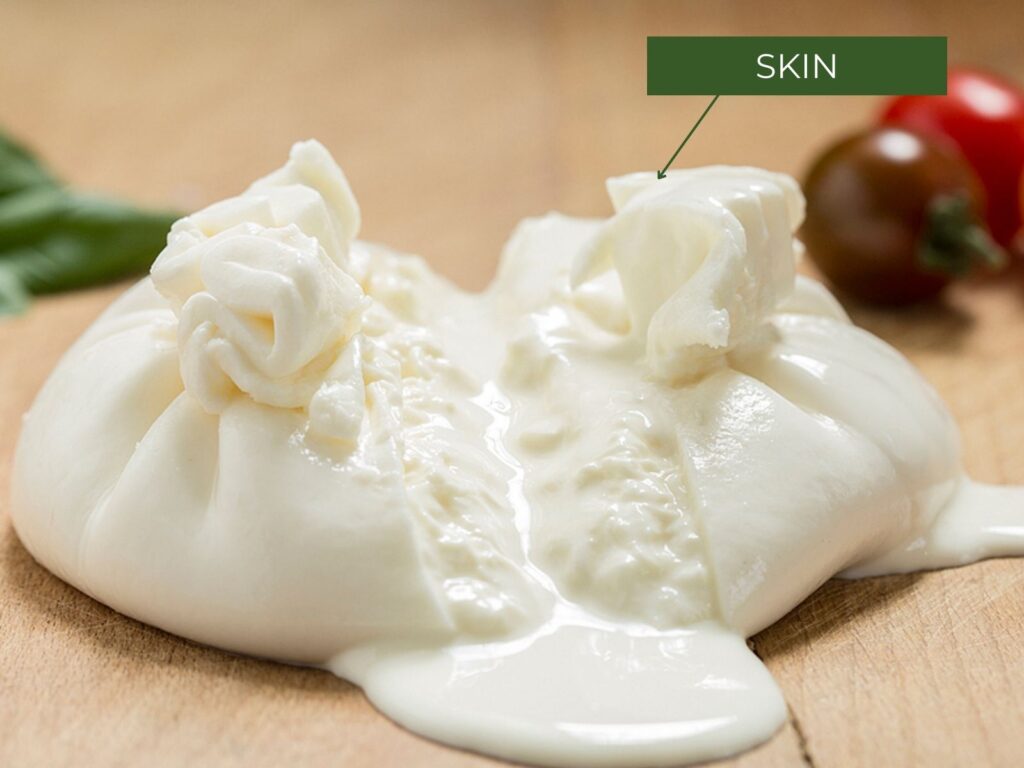
You’re probably thinking that we’ve already talked about rinds and the outside of cheese. Why do we have skin next? Well, there’s a subtle but very important distinction between rinds and skin.
Skin is a term that is used to describe the outer surface of pasta filata cheeses such as Mozzarella, Scamorza and Caciocavallo. It refers to the thin outermost layer on the cheese that tends to form within a few days of production.
You will also find a skin on the hugely popular pasta filata cheese from Puglia, Burrata. This particular wonder is made by filling up a Mozzarella sheet with Stracciatella (Mozzarella shreds) and cream. The outer Mozzarella sheet is referred to as a skin.
Paste (Pâte)
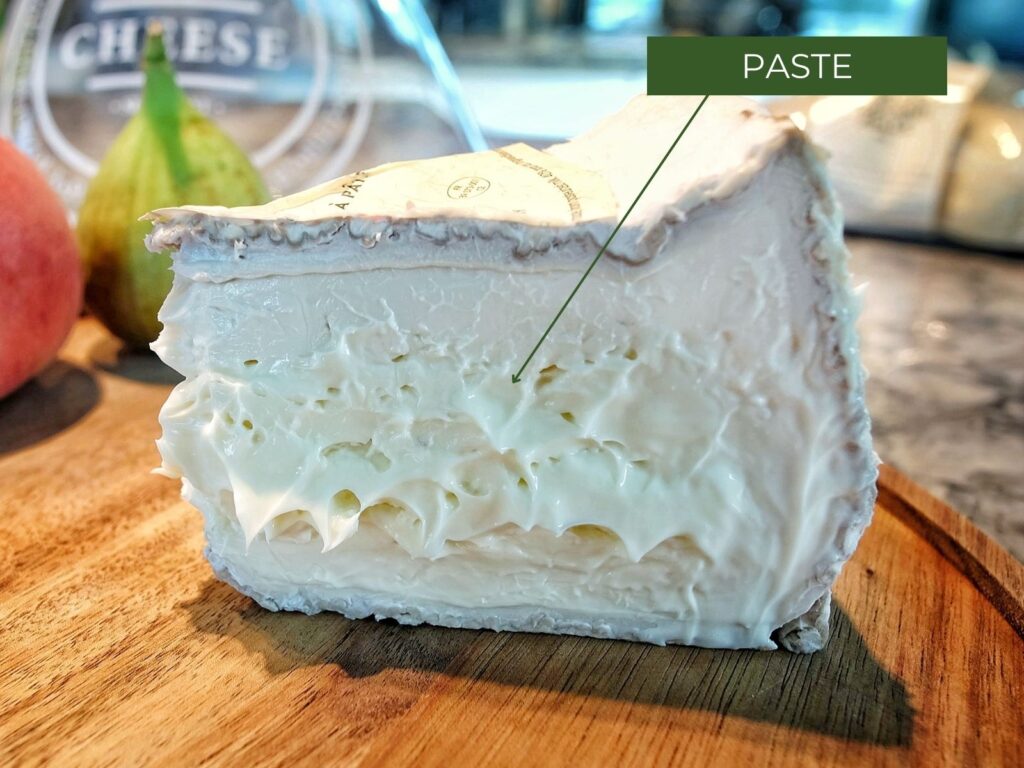
Now that we’ve discussed the outside, let’s explore the inside of cheese. Indeed, the part that’s under the rind is the paste (or pâte in French). Moreover, this term applies to both soft and firm cheeses. And sometimes, within the same cheese, you can find a range of textures within the paste.
The perfect example of this is in a surface-ripened cheese like Brie. As it ages, the part of the paste under the rind softens first. Eventually, the ripening reaches the middle part of the cheese.
As a matter of fact, the best time to enjoy a Brie is when at least half of its paste is soft and creamy and the centre is still a bit firm and chalky.
Core (Coeur)
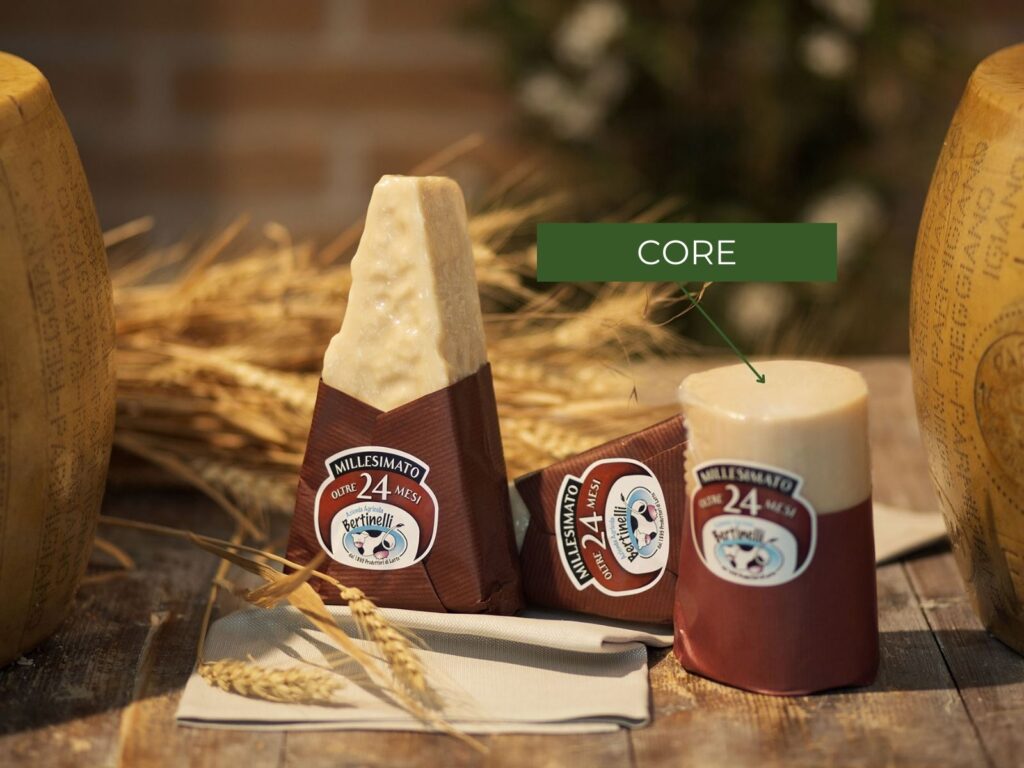
Speaking of the centre, the middle part of a pressed cheese is referred to as the core (or coeur in French). In cheeses such as Parmigiano Reggiano, Pecorino Romano and certain matured Goudas, this is the most prized part of the cheese. The reason for this is because it is packed with flavour and often has the best melt-in-your-mouth texture.
With the advent of industrialisation, machines are often used to cut pressed cheeses like Gouda. For the machine to work, the core of the cheese is often removed beforehand. And, in Europe, you can buy the core separately.
Blue Veins
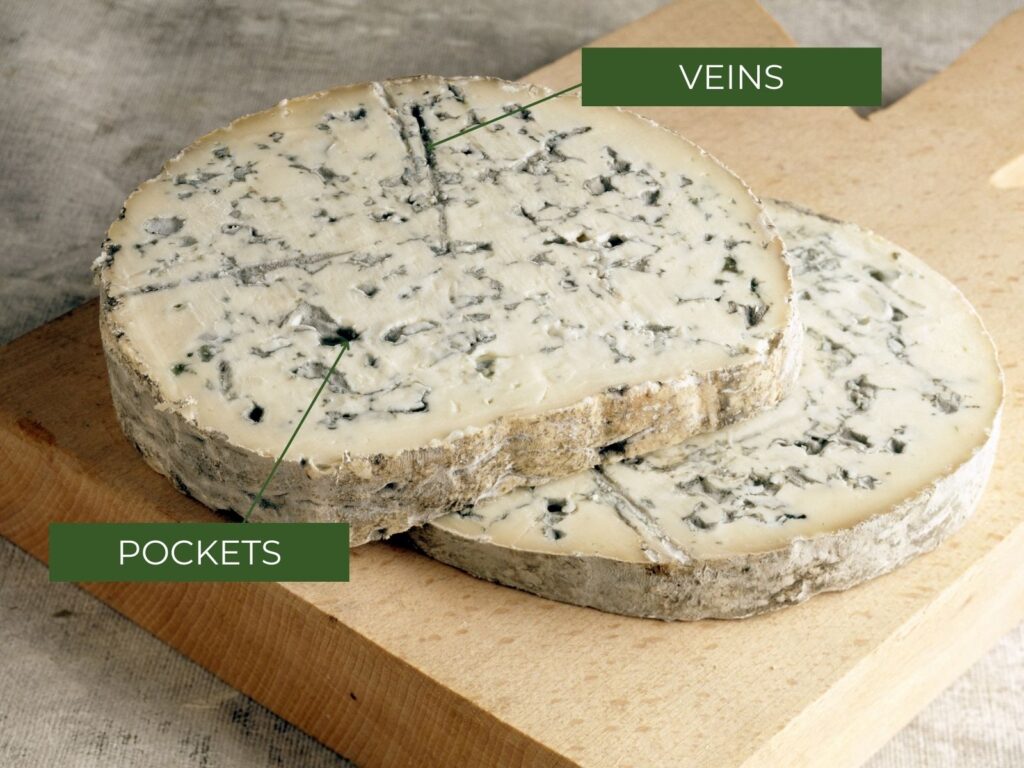
Next, we have veins. Blue veins to be more specific. Unsurprisingly, you will find these in blue cheese and they make a significant contribution to the aroma, texture and flavour of such cheeses. For those blue veins to form, it takes a combination of a mould called Penicillium roqueforti, oxygen and a loose curd structure within the cheese.
Cheesemakers add the mould P. roqueforti is added to their milk before turning it into cheese. However, on its own, it will not form blue pockets and veins. The cheese needs to have a loose texture to allow the formation of small pockets of air. And, during ageing, cheeses like Stilton and Roquefort are often pierced with a steel rod to let oxygen in.
All of those elements combine to create blue pockets and veins throughout the paste of such cheeses.
Eyes (Openings/Holes)
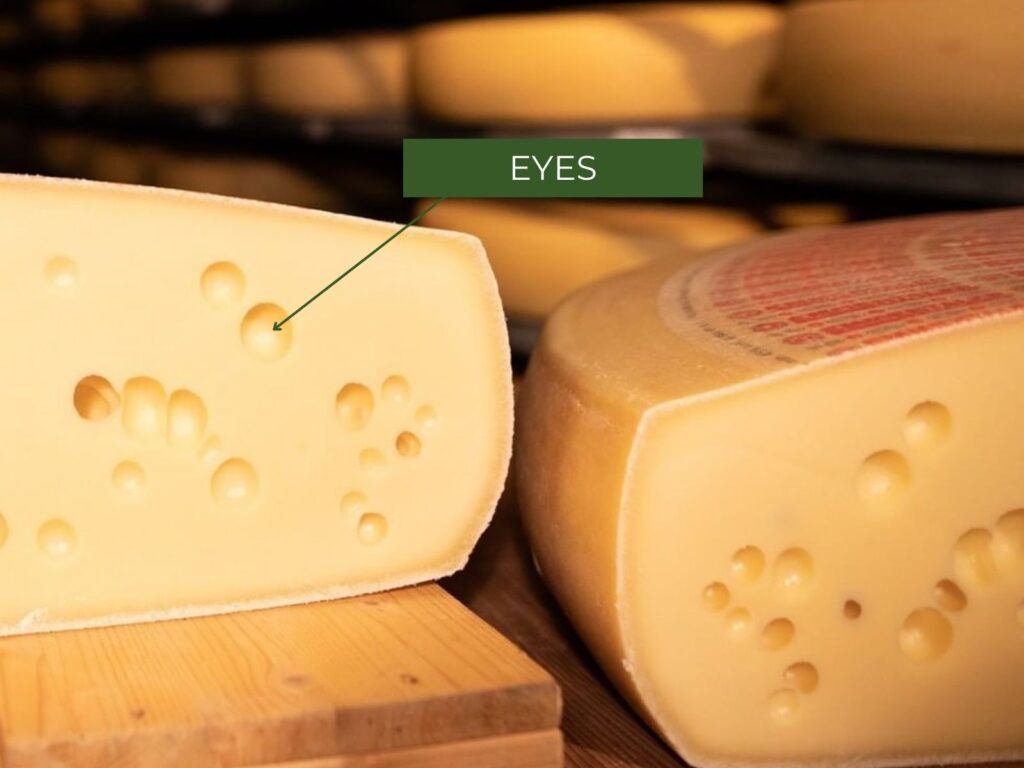
Such beautiful eyes! Yes, that’s what we call those holes that are present in some Swiss cheeses (such as Emmentaler), Gouda and Havarti. The eyes in those cheeses are very much intentional and are formed by the release of carbon dioxide inside the paste during maturation.
In the case of Emmentaler, the eyes are very large and are formed by a secondary starter culture called Propionibacterium freudenreichii subsp. shermanii.
On the other hand, the smaller eyes in Gouda are formed when Lactococcus and Leuconostoc strains convert citric acid in the milk into carbon dioxide. Unlike in Emmentaler, those bacteria produce less carbon dioxide and, hence, make smaller eyes.
Creamline
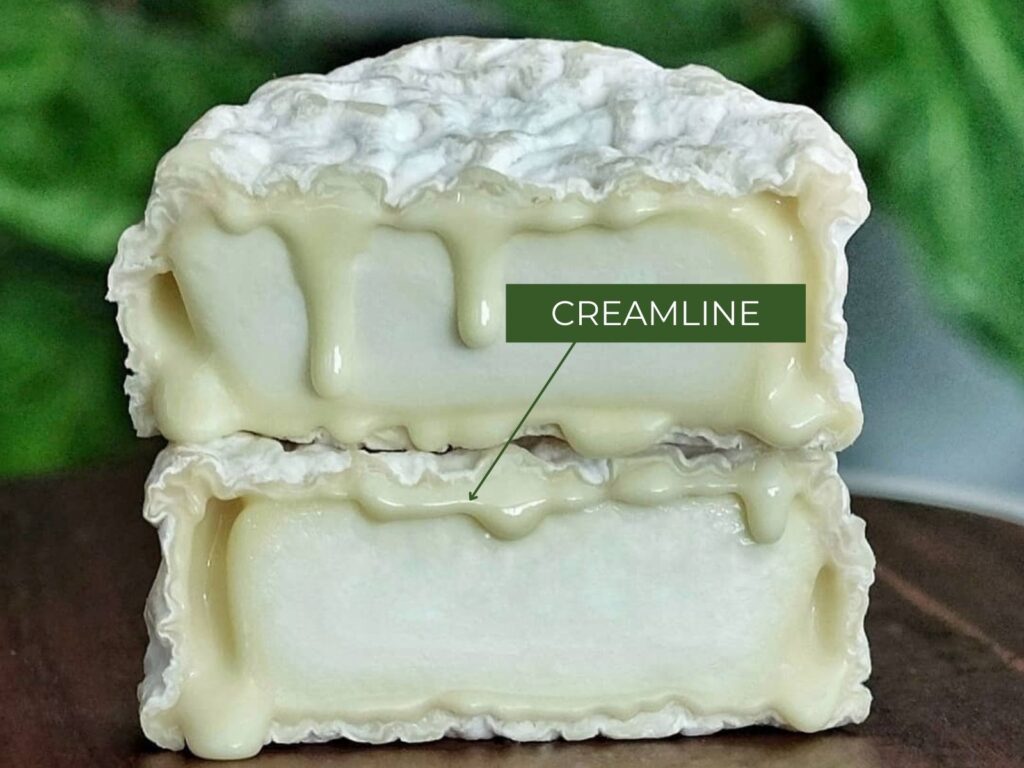
Finally, we’ve got the creamline. This particular part of cheese appears in soft cheeses at the spot where the paste meets the rind. With some soft white mould cheeses, the proteolysis process is most pronounced just under the rind. As a result, the texture softens much faster there than in the core of the cheese.
As you can see with the image above, when the cheese is ready to be eaten, its core is still quite chalky. But the creamline is already oozing spectacularly. As a matter of fact, this textural contrast is very much desirable and enjoyable.
Conclusion
Thank you for reading our article on the different parts of cheese. As you can see, there is so much to love about every type of cheese. What’s your favourite part? Let me know in the comments.


